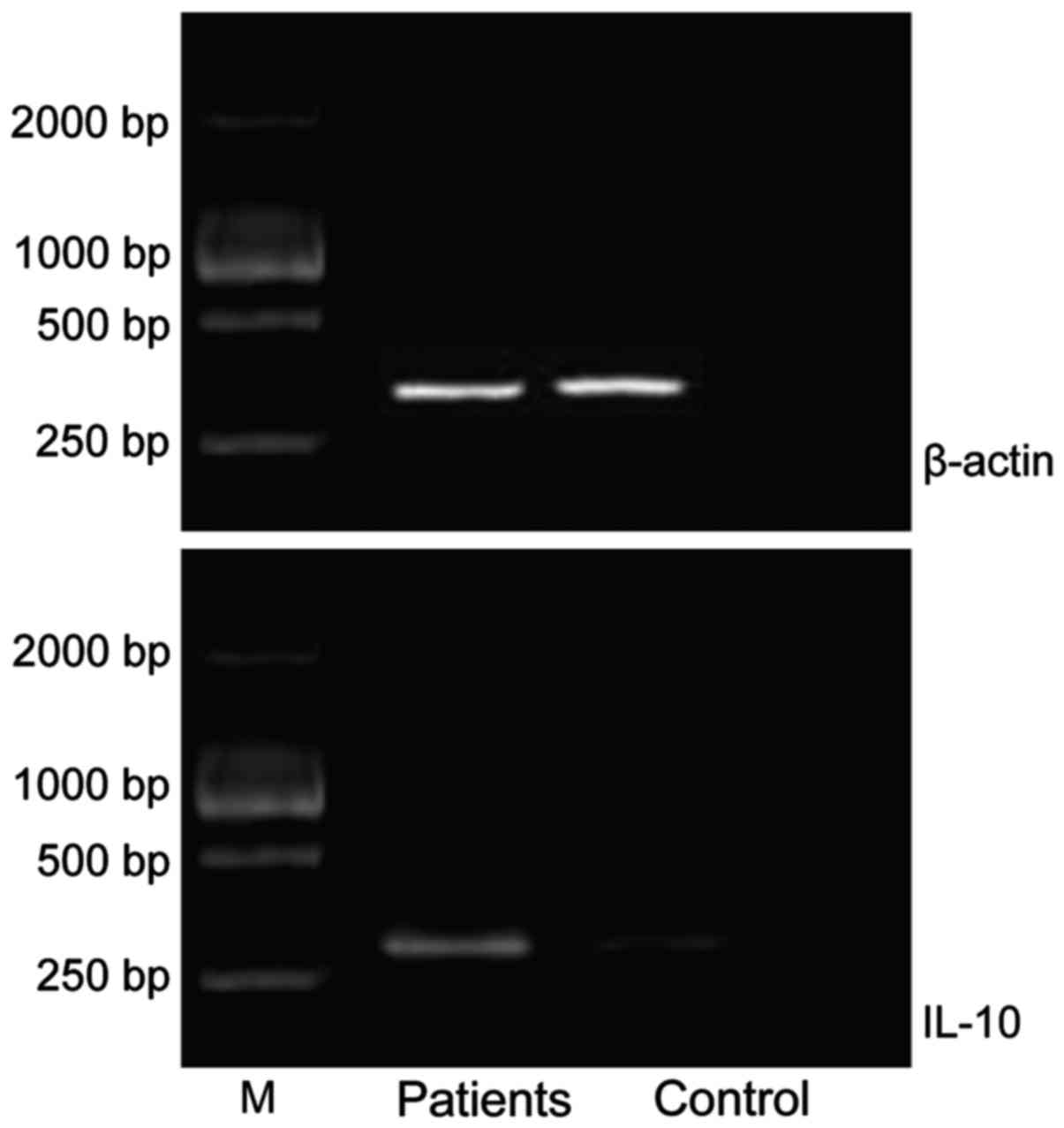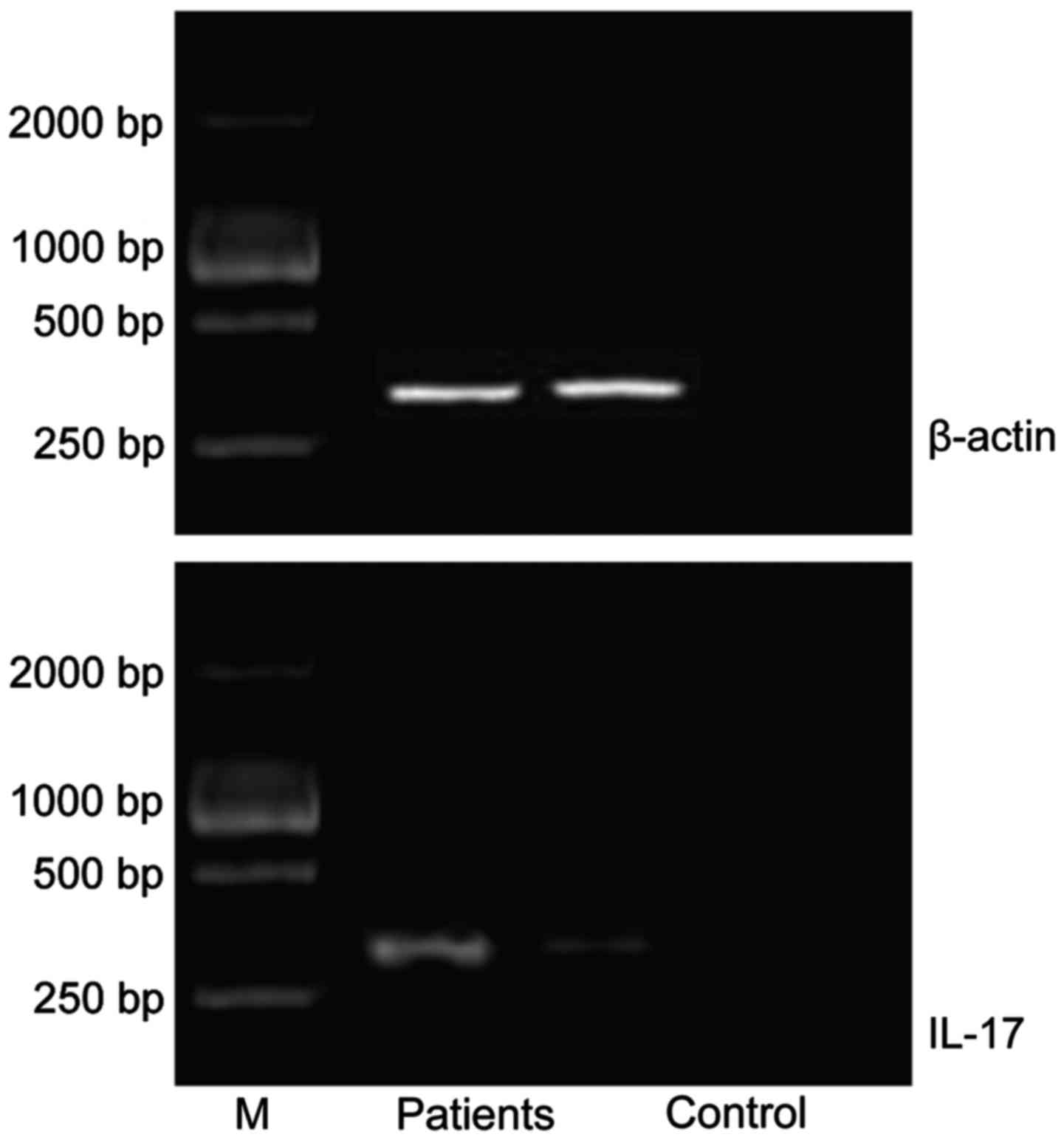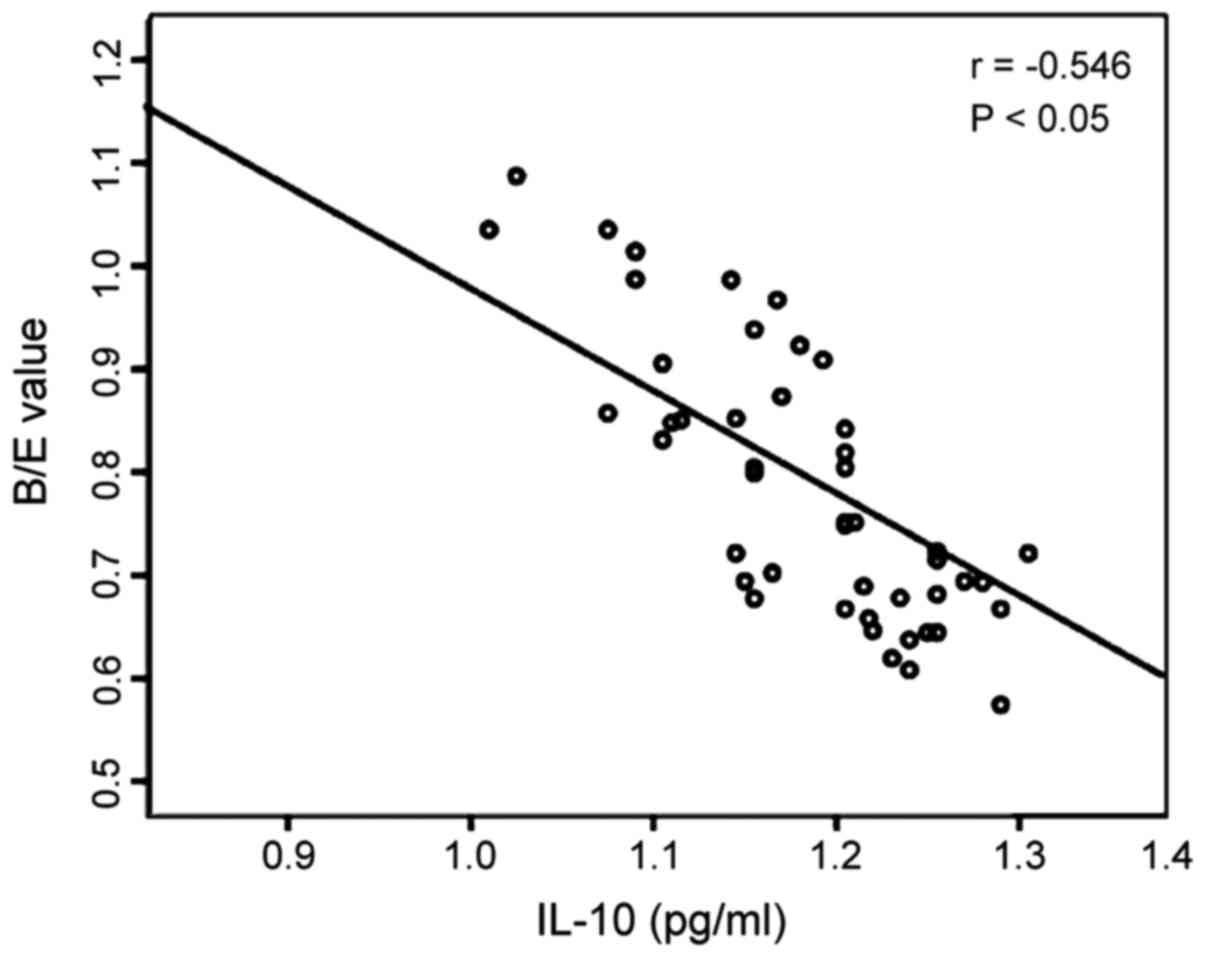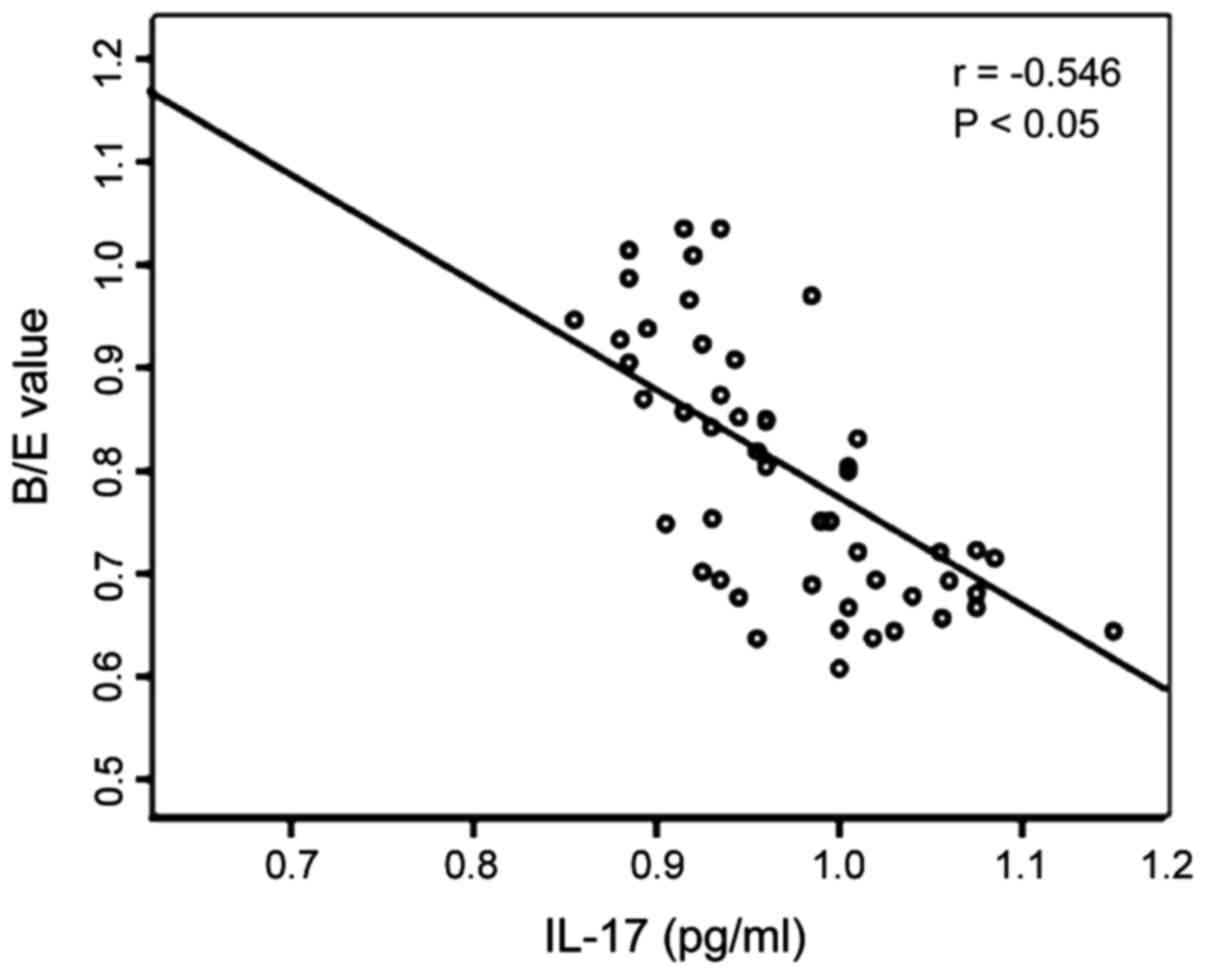Relationship between intestinal flora and inflammatory factors in patients with nonalcoholic steatohepatitis
- Authors:
- Published online on: November 10, 2017 https://doi.org/10.3892/etm.2017.5490
- Pages: 723-726
-
Copyright: © Zhang et al. This is an open access article distributed under the terms of Creative Commons Attribution License.
Metrics: Total
Views: 0 (Spandidos Publications: | PMC Statistics: )
Total PDF Downloads: 0 (Spandidos Publications: | PMC Statistics: )
Abstract
This study was conducted to analyze the change in intestinal flora of patients with nonalcoholic steatohepatitis and its correlation to the levels of the inflammatory cytokines interleukin-10 (IL-10) and IL-17. We selected 90 patients that were diagnosed with and treated for nonalcoholic steatohepatitis as the patient group and 80 healthy cases as the control group. We then compared the intestinal flora in the subject feces and the intestinal colonization resistance (B/E, Bifidobacterium to Enterobacter) of both groups. Using RT-PCR, we also detected IL-10 and IL-17 mRNA levels in the peripheral blood mononuclear cells of both groups. Furthermore, we used the ELISA method to determine serum IL-10 and IL-17 levels in order to explore the correlation between IL-10, IL-17 and B/E. The number of Bifidobacterium and Lactobacillus were significantly lower in the patient group than the control group (P<0.05), while Enterobacter and Enterococcus pathogenic bacteria were significantly higher in the patient group than the control group (P<0.05). The B/E value was lower in the patient group than the control group (P<0.05). The relative expression of IL-10 and IL-17 mRNA in the patient group was significantly higher than in the control group (P<0.05). In the patient group, the serum IL-10 levels were 1.17±0.15 pg/ml, which is significantly higher than the control group serum IL-10 levels which were 0.32±0.04 pg/ml (P<0.05). The serum IL-17 levels in the patient groups were 0.96±0.11 pg/ml, which was significantly higher than the control group, which had an average of 0.28±0.01 pg/ml serum IL-17 levels (P<0.05). Pearson's correlation analysis showed that the change of B/E value of intestinal flora in the patients group were negatively correlated with serum IL-10 (r=-0.546, P<0.05), and negatively correlated with serum IL-17 (r=-0.535, P<0.05). Therefore, compared to healthy people, the expression of IL-10 and IL-17 in the peripheral blood of patients with non-alcoholic fatty liver is high. The changes in intestinal flora in patients with nonalcoholic steatohepatitis are closely related to the changes of serum IL-10 and IL-17 levels, and they are involved in the development of nonalcoholic steatohepatitis.













